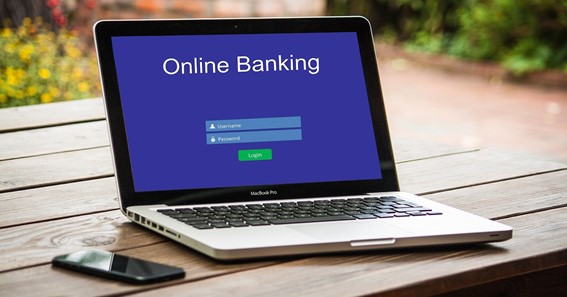Financial institutions such as banks have been present in our world for centuries. Ever since people started to use money to conduct their transactions, they needed somewhere to store it safely and even take out loans when needed. The history of money is closely connected with the history of the banking industry, even with the evolution of finances. The concept of money and banks has changed considerably during history, but the change was even more accelerated in recent years due to technological development. The financial sector has entered a new era, from cryptocurrencies, mobile wallets, and payment-enabled wearables to online banking and digital financial institutions.
Photo: Pixabay
While these changes have allowed financial institutions to reach more customers and increased transparency and convenience for the customers, it also introduced the growing risk of online dangers. Where there is money, there will also be cybercriminals or fraudsters trying to steal it. From ransomware to payday loan fraud, cybercriminals can utilize many malicious actions to gain access to confidential data or even customers’ funds and use them for their own profit. Luckily, banks have had to deal with fraudsters and cybercriminals for a long time, which is why they are not leaving fraud prevention to chance. Most financial institutions will have tools such as transaction monitoring software or email lookup integrated into their cybersecurity strategy to ensure the safety of the business and its customers.
click here – THE SCHOOL HELPS THE CHILD’S MENTALITY IN FOUR WAYS
Cybersecurity risks in the banking
When thinking about the banks, most of us just think about our finances and how to improve our credit score or even would we be approved for a loan we want. But, with the digital transformation most banks are going through and the growing risk of online danger, it is the end time for you also start thinking about the dangers world of banking is facing.
- Malware – The user’s device could be infected by malware that can be easily transferred to the bank’s internal system when the user connects with the network. Not only does this put the bank’s data in danger, but also customers’ confidential data and their money.
- Data breach – Banks have access to your most sensitive information, from your address, social security number to your financial data. If they get breached, that information could be exploited or sold to the highest bidder.
- Account takeover & identity theft – Cybercriminals and fraudsters can use the data they have accessed through malicious actions and take over your account. Once they control your account, they can transfer money or purchase some items damaging you financially. By the time you notice something, they will be long gone.
It is imperative you take responsibility for your online safety and ensure your financial information stays safe. In addition to your precautionary steps, the banks need to ensure your digital safety whenever you access their services. Let’s take a look into how they achieve that.
click here – Filmora is the best editing software online on the internet
How can banks ensure your digital safety?
While various elements are employed in financial institutions’ cybersecurity and fraud prevention strategies, all of them work together to ensure you remain safe when accessing their services. These are the most important ones:
Multi-factor authentication
Every banking institution implements multi-factor authentication as part of a cybersecurity strategy. This gives you an additional level of protection as it requires the user to provide two or more verification factors in order to gain access to their system. While cybercriminals might be able to gain access to your username or password, it would be almost impossible to get additional verification, such as one-time passcode sent to your phone.
Transaction monitoring
By implementing transaction monitoring into their security strategy, financial institutions can monitor customers’ transactions in real-time. At the same time, transactions are compared to the customer’s transaction history to ensure there are no discrepancies in their activity. This might be the most crucial element in any cybersecurity and fraud prevention strategy as it allows financial institutions to stop malicious actions before they can cause any damage.
Secure infrastructure
Everything is encrypted, from database systems to servers where data is stored. This ensures that even if their system is breached, all the sensitive data like account number, customer name and address are protected.
Regular security audits
To ensure they offer maximum protection at all times, banking institutions conduct regular security audits checking for any vulnerabilities that might happen over time. This allows them to patch any issues before cybercriminals or fraudsters can use them.
Fraudsters and cybercriminals will never stop conducting their malicious actions, but the risk can be significantly reduced by implementing a proper security strategy.






